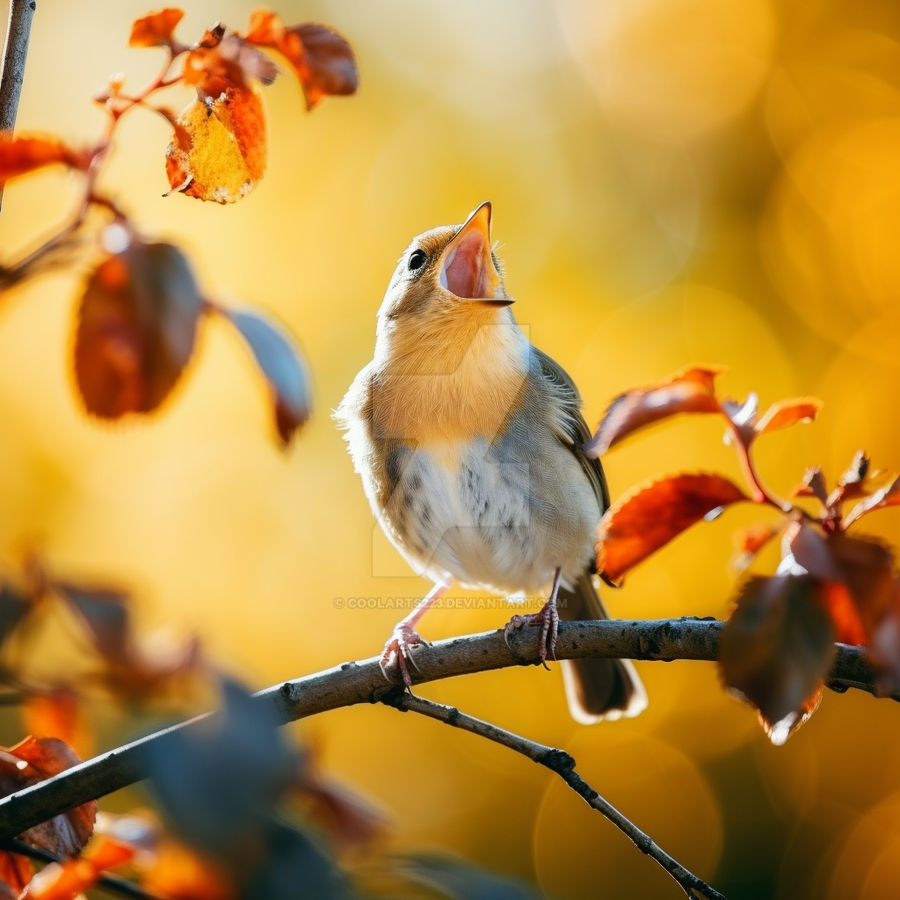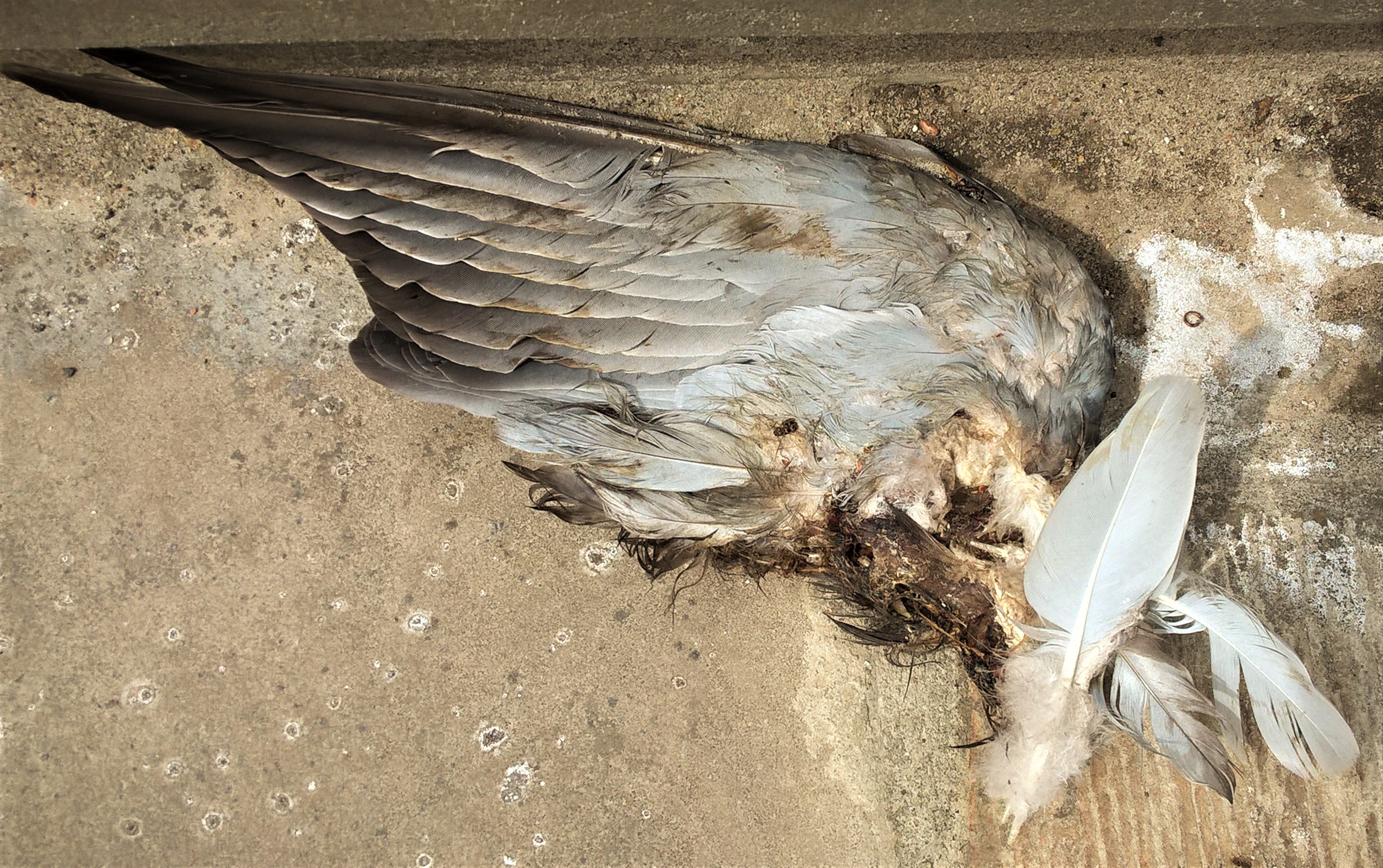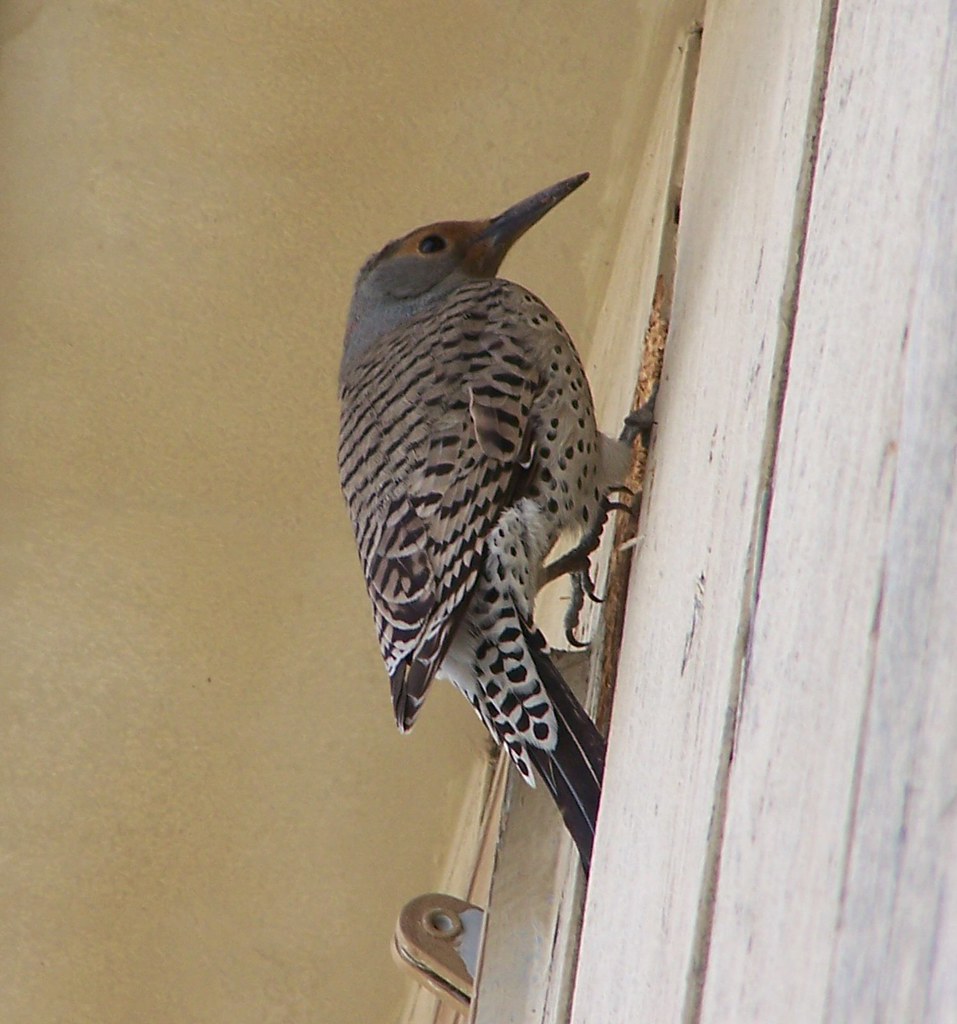Introduction: Addressing the Problem of Birds in Garages

Birds in garages can be a frustrating and inconvenient issue faced by homeowners. These unwanted visitors often find their way inside through open doors, windows, or vents. Once inside, they can cause various problems that need to be addressed promptly.
Bird Droppings and Nesting Damage
Bird droppings pose a significant concern as they can be corrosive, damaging surfaces and staining belongings stored in the garage. Additionally, nests built by birds can obstruct vents and chimneys, leading to ventilation issues and potential fire hazards.
Noise Disturbances and Health Hazards
The presence of birds in garages can also create noise disturbances, especially if the garage is attached to the house or used for quiet activities. Moreover, bird droppings carry bacteria, fungi, and parasites that can be harmful to humans, potentially causing respiratory issues.
Understanding Bird Behavior for Effective Solutions
To effectively address the issue, it’s crucial to understand the behavior and habits of the bird species involved. By identifying the bird species and learning about its patterns, homeowners can develop strategies for safely removing the bird from the garage and preventing future occurrences.
In the following sections, we will explore various aspects of dealing with birds in garages. We will provide tips for identifying common birds, understanding their behavior, preparing the garage to remove attractions, ensuring safety during the removal process, catching the bird using different strategies, releasing it safely back into the wild, and implementing preventive measures to keep birds out of the garage.
By following these steps and techniques, homeowners can successfully resolve the issue of birds in their garages while ensuring the well-being of the birds and maintaining a clean and functional space.
Identifying the Bird: Tips for Accurate Identification

Accurately identifying the bird species is crucial before attempting to remove it from the garage. Here are some tips to help you identify common birds often found in garages.
1. Observing Physical Characteristics
Carefully observe the bird’s size, shape, coloration, and distinctive markings. Note specific patterns on their feathers, beak shapes, or distinct color patches. These characteristics can help narrow down the possibilities and make a more accurate identification.
2. Noticing Behavioral Cues
Pay attention to how the bird moves, flies, and behaves in the garage. Specific behaviors, such as repeatedly flying towards windows or signs of distress when trapped, can provide valuable clues for identification.
3. Listening to Vocalizations
Take note of the bird’s vocalizations while it is in the garage. Listen to its chirps, trills, or melodic songs. Comparing these sounds to recordings of common bird calls can aid in identification.
4. Utilizing Field Guides and Bird Identification Apps
Consider using field guides or bird identification apps for assistance. These resources provide detailed information, images, and descriptions of various bird species, making them valuable references for accurate identification.
5. Capturing Clear Photos
If identifying the bird in person is challenging, take clear photos from different angles. Clear photographs can help analyze the bird’s physical characteristics and seek identification assistance from experts or online birding communities.
Remember to exercise caution and respect when observing or attempting to identify the bird. Avoid disturbing or harming it during the identification process. By carefully observing physical characteristics, behavior, vocalizations, and utilizing available resources, you can increase your chances of accurately identifying the species and proceeding with appropriate removal strategies.
Understanding the Bird’s Behavior: Decoding Habits and Patterns

To effectively address birds in your garage, understanding their behavior is crucial. By observing and interpreting their habits and patterns, you can safely and efficiently guide them out. Here are key factors to consider:
Species Identification
Identify the bird species in your garage. Note their size, coloration, and beak shape for identification. Online bird guides or apps can help.
Natural Behavior
Familiarize yourself with birds’ innate instincts and behaviors to anticipate their movements. They are often attracted to light sources, so windows and open doors are potential points of interest.
Flight Patterns
Observe the bird’s flight patterns to understand its behavior. Some birds fly in straight lines, while others have erratic paths. Look for repeated flight paths.
Vocalizations
Pay attention to the bird’s calls and songs, which provide valuable information about its mood and intentions. Distress calls may indicate fear or being trapped.
Perching and Roosting Spots
Identify elevated spots like beams, rafters, or ledges where birds seek safety and rest. Anticipate their movements and guide them towards an exit.
Understanding the behavior of the bird species in your garage is crucial. Recognize their habits, interpret flight patterns, and pay attention to vocalizations. Next, we’ll explore preparing your garage by removing attractions that keep the bird inside.
Preparing the Garage: Removing All Attractions

Before catching a bird in your garage, remove all attractions that entice them to stay or return. Encourage the bird to seek an alternative habitat outside. Here’s how to prepare your garage:
Clearing Food Sources
Thoroughly examine your garage for open food containers, garbage cans, or spilled pet food. Secure or remove these items to eliminate the bird’s interest in your garage as a feeding ground.
Relocating Plants and Flowers

Check for plants or flowers that attract insects, which can draw birds into the space. Temporarily relocate or remove them until the bird is guided out.
Removing Nesting Materials
Clear potential nesting spots like stored fabrics, piles of leaves, or unused boxes. Discourage nesting behavior and prompt the bird to find an alternative location.
Closing Openings
Inspect your garage for open windows, doors, or other entry points. Close these openings to prevent additional birds from entering. Seal all exits except the intended one.
Dimming Lights and Covering Reflective Surfaces
Dim or cover bright lights, mirrors, or windows that can disorient birds. Minimize confusion and guide them towards the exit.
Minimizing Noise
Turn off noisy equipment or appliances like fans, air conditioners, or radios. Create a calm and quiet environment to increase the chances of leading the bird out.
Clearing Clutter and Obstacles
Remove clutter or obstacles from the garage floor and ceiling. Provide a clear path, facilitating the bird’s movement towards the exit.
By following these steps and preparing your garage accordingly, you create an environment less attractive to birds. Increase the likelihood of a successful bird removal process. Once you’ve eliminated attractions, ensure safety and take precautions before attempting to catch the bird.
Ensuring Safety: Precautions Before Catching the Bird

Before attempting to catch a bird in your garage, prioritize safety by following these essential steps:
Assess the situation

Carefully evaluate the bird’s size, behavior, and potential hazards in the garage to plan your approach and reduce accidents.
Wear protective gear
Put on gloves, long sleeves, and goggles to protect yourself from scratches, bites, and debris.
Open all exits
Ensure all windows, doors, and potential exits are open to increase the bird’s chances of finding its way out.
Clear the area
Remove unnecessary objects and clutter to prevent accidents and facilitate movement for both you and the bird.
Dim lights and restrict access
Turn off unnecessary lights and close blinds to create a darker environment that encourages the bird to gravitate towards open exits. Keep pets and children away to maintain a controlled environment.
By following these precautions, you can ensure a safer experience while catching the bird in your garage.
Catching the Bird: Strategies and Techniques

There are several strategies and techniques you can employ to catch a bird in your garage:
Create an Exit Path

Open windows and doors, guiding the bird towards the open exit using long objects like brooms or rakes.
Use a Bird Net or Large Towel
Gently capture the bird using a net or towel, being cautious not to startle or injure it. Release the bird in a safe location away from the garage.
Guide the Bird with a Long Pole or Reacher
Use a long pole or reacher to gently guide the bird towards an open exit, especially if it is perched on a high surface.
Use Bird Traps or Cages
Place bird traps or cages baited with food or nesting material near the bird’s location. Transport the bird outside and release it in a suitable area away from the garage.
Remember to handle the bird with care, avoiding excessive force or stress. Release it in a safe environment where it can resume its natural behaviors.
In the next section, we will discuss releasing the bird and preparing for its safe re-entry into the wild.
Word count: 207
Releasing the Bird: Preparing for a Safe Return to the Wild

Before releasing the bird, ensure its readiness for a safe return to the wild. This section guides you through the necessary steps.
Assess the bird’s readiness
Observe the bird’s behavior to determine its health and flight capabilities. Look for signs of alertness, activity, and free movement. If the bird appears injured or weak, seek assistance from a wildlife rehabilitator.
Choose the right release site

Select a suitable location with nearby trees, shrubs, and resources for the bird. Avoid busy areas and potential predators.
Create an unobstructed exit path
Open all doors and windows leading outdoors, removing any obstacles or hazards.
Clear the vicinity
Minimize stress and risks by ensuring no people, pets, or threats are nearby.
Gently encourage departure
If the bird doesn’t fly out on its own, use a long object like a broom or fishing net to guide it towards the open exit.
Allow acclimation time
Give the bird space to acclimate to its surroundings. Observe from a distance, allowing it to regain its bearings and take flight.
By following these steps, ensure a safe and successful release, giving the bird the best chance for a healthy and independent life.
Preventing Birds from Entering Your Garage

Implement preventive measures to deter birds from entering and nesting in your garage. Understand their attraction and take action.
Addressing bird attraction
Garages provide food, shelter, and nesting materials. Eliminate easy access to food sources and potential nesting sites.
Seal entry points
Inspect and seal gaps or openings in garage doors, windows, vents, and other areas.
Properly store food sources
Keep pet food in airtight containers, secure garbage cans, and avoid storing grains or birdseed in the garage.
Install bird deterrents
Use bird spikes, netting, reflective tape, or scare balloons to make landing or nesting difficult.
Motion-activated sensors and sound devices
Install devices that emit noise or light to startle and discourage birds from approaching.
Maintain proper lighting
Keep the garage well-lit, especially during dawn and dusk, to create an uncomfortable environment for birds.
Implement these measures to reduce the chances of birds entering your garage, protecting your belongings and maintaining a bird-free environment.
Conclusion: Steps for Getting a Bird Out of Your Garage

Getting a bird out of your garage can be a challenging task, but by following these well-defined steps, you can ensure a safe and successful outcome for both you and the bird:
-
Assess the situation: Observe the bird’s behavior to determine if it’s injured, trapped, or lost. This will guide your next steps.
-
Open the garage doors: Provide an escape route by opening all doors and windows, creating a clear path to the outside. Remove any obstacles near the exits.
-
Create an exit strategy: Place a large cardboard box or sheet outside the open garage doors, leading to a safe area. This guides the bird to a specific location for a successful release.
-
Encourage the bird to leave: Gently guide the bird towards the open doors, using a broom or long object as a barrier. Avoid sudden movements or loud noises.
-
Reduce distractions: Turn off unnecessary lights and minimize noise to create a natural and inviting environment for the bird to fly towards the exit.
-
Exercise patience: Birds may take time to gather the confidence to fly out. Be patient and adjust your approach based on the bird’s behavior.
-
Seek professional help if necessary: If the bird remains trapped or injured despite your efforts, contact a professional wildlife rehabilitator or animal control agency.
Remember to prioritize the bird’s well-being throughout the process. Handle the situation calmly and without causing harm, ensuring a safe and humane resolution.
By following these steps, you can effectively and safely remove a bird from your garage, helping it return to its natural habitat. With patience and care, you can make a positive impact on the lives of these beautiful creatures while maintaining a bird-free garage environment.
Frequently Asked Questions
How do I get a bird out of my garage without hurting it?

To safely remove a bird from your garage without causing harm, follow these steps:
- Open all doors and windows to provide an escape route.
- Create a clear path by removing obstacles near the exits.
- Gently guide the bird towards the open doors using a broom or long object.
- Minimize distractions by turning off unnecessary lights and reducing noise.
- Be patient and allow the bird time to gather the confidence to fly out.
What should I do if the bird remains trapped or injured?
If your attempts to release the bird are unsuccessful or if it appears injured, consider contacting a professional wildlife rehabilitator or animal control agency for assistance. They have the expertise to handle injured birds and ensure their proper care.
How can I prevent birds from entering my garage in the future?
To prevent birds from entering your garage, take these preventive measures:
- Seal gaps or openings in garage doors, windows, vents, and other areas.
- Properly store food sources, such as pet food, in airtight containers.
- Use bird deterrents like spikes, netting, reflective tape, or scare balloons.
- Install motion-activated sensors or sound devices to startle birds.
- Maintain proper lighting in the garage, especially during dawn and dusk.
Are bird deterrents effective in keeping birds out of the garage?
Yes, bird deterrents can be effective in keeping birds out of the garage. Spikes, netting, reflective tape, and scare balloons make landing or nesting difficult for birds. However, it’s important to choose the appropriate deterrents for the bird species you are dealing with and regularly maintain them to ensure their effectiveness.
Can I catch a bird in my garage and release it outside?
Yes, you can catch a bird in your garage and release it outside. Use strategies like creating an exit path, using a bird net or large towel, guiding

Leave a Reply